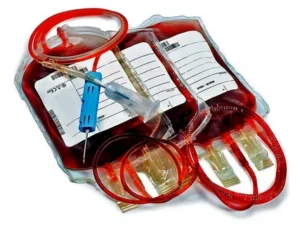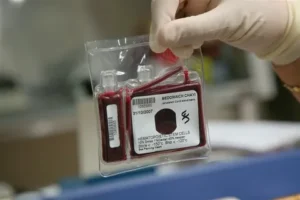Are you looking for how blood banks Makes Money?
Blood banks play a vital role in our healthcare system by ensuring the availability of safe and reliable blood products for patients in need. While their primary mission is to save lives, blood banks must also sustain themselves financially to continue their lifesaving operations.
This blog post will explore how blood banks make money and support their critical mission.
Brief History of Blood Banks
Although the concept of blood transfusions dates back to the 17th century, blood banks weren’t formed until the early 1900s. Dr. Bernard Fantus developed the first blood bank in Chicago in 1937.
The blood bank was established to offer people in need a dependable and secure source of blood. The concept quickly gained popularity, and blood banks began to open nationwide.
During World War II, blood banks played a significant role in saving the lives of wounded soldiers. The American Red Cross set up blood banks in military hospitals to aid in the war effort and urged people to donate blood.
After the war, blood banks continued to grow, and by the 1950s, blood banking had become a well-established industry.

How Blood Bank Makes Its Money?
1. Donations from Voluntary Blood Donors
The primary source of blood for blood banks is voluntary blood donations. These donations come from individuals who willingly donate their blood without any monetary compensation.
This selfless act not only serves the greater good but also forms the foundation of the blood bank’s operations. The collected blood is carefully screened, processed, and stored to ensure its safety and suitability for transfusion. While blood banks do not pay donors, they often incur expenses related to screening, testing, and storage of donated blood.
2. Sale of Blood Components
Following collection and processing, the blood is divided into many components, including red blood cells, plasma, and platelets. Specific medical diseases are treated with these components, which have a variety of therapeutic uses.
Blood banks can generate revenue by selling these blood components to hospitals, healthcare facilities, and research institutions. The expense of collecting, testing, processing, and storing these components is typically covered by the pricing of these components, which is typically controlled to provide fair and affordable patient access.
3. Contracts with Healthcare Institutions
How Blood Bank Makes Its Money? Blood banks often enter into contracts or agreements with hospitals and healthcare institutions to become their primary blood supplier. These agreements ensure a steady demand for blood products from the blood bank and provide financial stability.
Healthcare institutions benefit from the assured availability of blood products, while blood banks receive regular orders and payments, supporting their ongoing operations.
4. Specialized Testing Services
In addition to blood collection and distribution, blood banks may offer specialized testing services to generate additional revenue. These services can include testing for infectious diseases, compatibility testing for organ transplantation, and genetic testing related to blood disorders.
By leveraging their expertise in blood testing, blood banks can provide value-added services to medical professionals and patients while diversifying their revenue streams.
5. Research Collaboration and Grants
Blood banks often collaborate with academic institutions, pharmaceutical companies, and other research organizations. These collaborations can lead to scientific advancements, improved blood processing techniques, and the development of new therapies.
Additionally, blood banks may apply for research grants from government agencies or foundations to support their research initiatives. These grants not only fund research but also contribute to the financial sustainability of blood banks.
6. Community Outreach and Fundraising
Many blood banks actively engage in community outreach programs and fundraising activities to generate support and funds. They organize blood drives in collaboration with schools, businesses, and community organizations, encouraging individuals to donate blood.
Furthermore, blood banks may organize events, such as charity runs or galas, to raise funds and awareness for their cause. These efforts not only raise revenue but also promote community involvement and strengthen the bond between the blood bank and the public.

Ethical Issues in Blood Bank Money Making
There are ethical questions surrounding the marketing of blood. Some contend that the profit motivation created by selling blood and blood-derived goods makes the practice immoral. Others claim that the blood banking system would fail without the commercialization of blood.
The payment of donors is another moral dilemma in blood banking. Although it is illegal in the United States, paying blood donors abroad is legal.
Rewarding donors, according to critics, stimulates blood donation, which could lead to the use of tainted blood in transfusions.

Blood Bank Regulations
In the United States, blood banks must follow The Food and Drug Administration has tight standards (FDA). The FDA regulates every aspect of the blood banking process, including donor eligibility, blood collection, processing, and distribution.
The American Association of Blood Banks is one such organization that accredits blood banks in the United States. To become accredited, blood banks must meet strict standards for quality and safety.

Challenges Faced by Blood Banks
Blood banks face several challenges, including maintaining an adequate blood supply and ensuring the safety of the blood supply. In times of crisis or natural disasters, blood banks may experience shortages of certain blood types.
Another challenge faced by blood banks is the risk of disease transmission. Blood banks must screen donors for infectious diseases and use rigorous testing methods to ensure the safety of the blood supply.
Future of Blood Banks
The blood banking industry is constantly evolving. For instance, some blood banks use automated blood-collecting devices that enable more accurate donations. Other blood banks are investigating artificial blood as a potential replacement for donated blood.
The need for a global blood banking system becomes more apparent as the world becomes more interconnected.

Conclusion
Blood banks are an integral part of our healthcare infrastructure, ensuring the availability of lifesaving blood products to those in need. While saving lives is their main priority, blood banks must also make money to maintain their operations and deliver top-notch services.
Blood banks can carry out their selfless objective while also financially viable through a mix of voluntary blood donations, the sale of blood components, agreements with healthcare organizations, contracts for specialized diagnostic services, research collaborations, and community engagement.
By supporting How Blood Bank Makes Money and their revenue generation efforts, we contribute to a stronger healthcare system and save countless lives.
Related Article:





